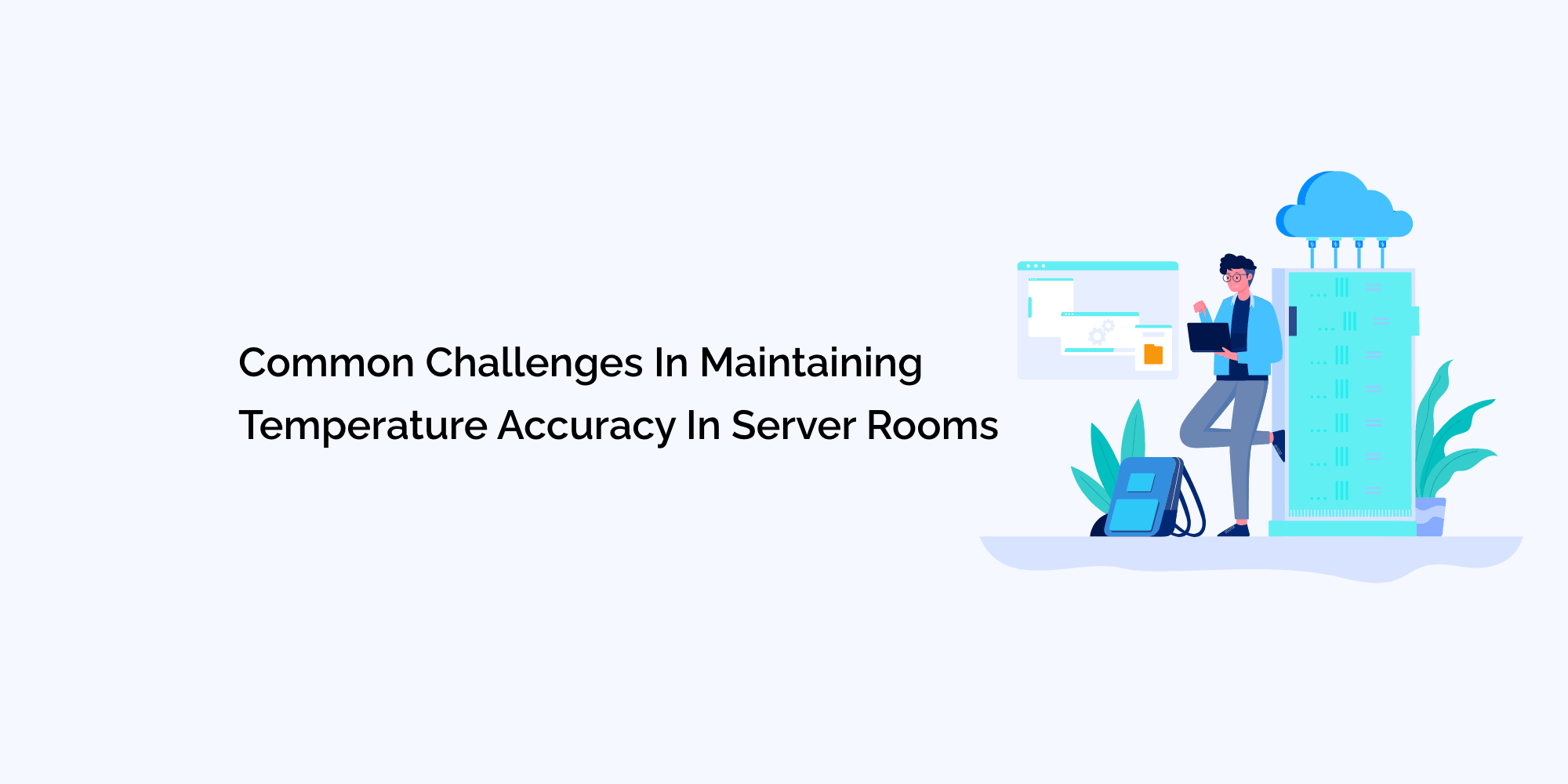In today's technology-driven world, server rooms play a crucial role in ensuring the smooth functioning of businesses. These rooms house an array of electronic equipment, including servers, routers, switches, and storage devices, all of which generate substantial amounts of heat. Maintaining an optimal temperature in server rooms is essential to prevent equipment failure and ensure uninterrupted operations.
However, achieving and sustaining temperature accuracy in server rooms can be a challenging task due to various factors.
This blog explores some of the common challenges faced in maintaining temperature accuracy in server rooms and discusses potential solutions to overcome them.
Inadequate Cooling Systems
One of the primary challenges in maintaining temperature accuracy in server rooms is the presence of inadequate cooling systems. As the number and density of servers increase, traditional cooling methods may become insufficient. Air conditioning units, for instance, may struggle to handle the high heat loads generated by modern servers. Inadequate cooling can lead to overheating, which poses a significant risk to the equipment and can result in system failures or downtime.
To address this challenge, businesses should consider investing in advanced cooling systems designed specifically for server rooms. Precision air conditioning units, for example, offer enhanced cooling capabilities and better temperature control. Additionally, implementing efficient airflow management techniques, such as hot-aisle/cold-aisle containment, can help optimize cooling efficiency and maintain temperature accuracy.
Improper Rack Layout and Cable Management
Another challenge affecting temperature accuracy in server rooms is improper rack layout and cable management. A disorganized rack layout can impede proper airflow and disrupt the cooling process. Servers placed too closely together or in a haphazard manner can create hotspots, where temperature levels rise significantly, potentially damaging equipment. Similarly, improper cable management can obstruct airflow and contribute to increased temperatures.
To overcome these challenges, server room administrators should prioritize proper rack layout and cable management practices. Utilizing cable management solutions, such as cable trays or vertical cable managers, can help organize cables and maintain clear pathways for airflow. Implementing best practices for rack spacing, such as leaving adequate space between servers, can facilitate proper cooling and temperature distribution within the server room.
Inefficient Ventilation and Airflow
Efficient ventilation and airflow management are crucial for maintaining temperature accuracy in server rooms. Insufficient ventilation can lead to stagnant air, causing temperature imbalances and hotspots. Inadequate airflow, on the other hand, prevents proper heat dissipation from the equipment, resulting in elevated temperatures.
To address these challenges, server room designs should incorporate efficient ventilation systems. This can involve installing fans or vents strategically to promote air circulation and remove hot air. Implementing effective airflow management techniques, such as using blanking panels to cover unused rack spaces or employing raised floors for under-floor cooling, can also help optimize airflow patterns and maintain temperature accuracy.
Environmental Factors
Server room temperature accuracy can be significantly impacted by external environmental factors. Changes in ambient temperature, humidity levels, and even the proximity of server rooms to other heat-generating areas can affect the overall temperature within the room. Variations in external conditions can cause the cooling system to work harder, leading to potential temperature fluctuations and inaccurate temperature readings.
To mitigate the impact of environmental factors, server rooms should be designed with proper insulation and environmental controls. Installing insulation materials on walls, ceilings, and floors can help reduce the influence of external temperature changes. Implementing environmental monitoring systems can also provide real-time data on temperature and humidity levels, enabling proactive measures to maintain temperature accuracy.
Conclusion
Maintaining temperature accuracy in server rooms is crucial for the efficient and reliable operation of critical equipment. While challenges may arise, such as inadequate cooling systems, improper rack layout and cable management, inefficient ventilation and airflow, and environmental factors, implementing appropriate solutions can help overcome these obstacles.
By investing in advanced cooling systems, optimizing rack layout and cable management, improving ventilation and airflow management, and considering environmental factors, businesses can ensure the temperature accuracy necessary for the seamless functioning of their server rooms. By addressing these challenges proactively, organizations can enhance equipment reliability, reduce downtime, and safeguard their technological infrastructure.








